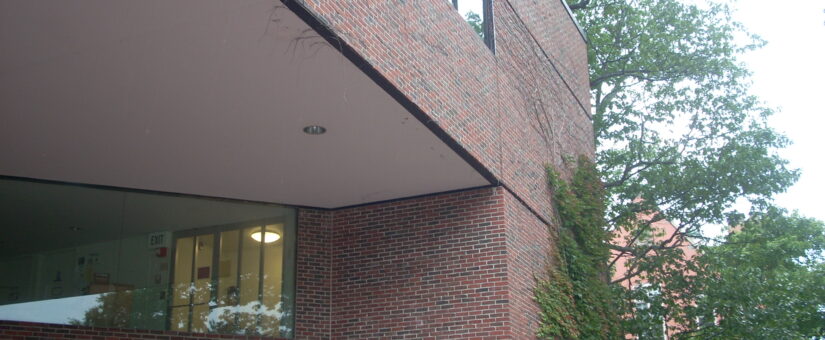
Coaching and Neuroscience Research Findings
The following “animation” questions were posed at a symposium sponsored by the International Consortium for Coaching in Organizations (ICCO) held in Seattle on June 14-15, 2007. These questions concern the implications of neuroscience research for the professional of coaching. They are worth pondering for anyone involved in the field of professional coaching.
Animation Questions
Procedural Memory
Habitual behavior requires the shifting of knowledge and skill-sets from focused, intentional and explicit (conscious) memory systems to another memory system located in a different part of the brain (often called “procedural” memory). This second memory system is holistic, much less accessible to intention and implicit (unconscious) in nature. When coaches try to “break up” the habitual behavior of their clients, they may be trying to move stored material between two different memory systems. Resistance to the disruption of habitual behavior may be based not only in our fear of changing established behavior patterns, but also in the profoundly difficult task of moving stored memories back from the implicit system to the explicit system where these memories were first formed.
Neural Networks
Our social/psychological constructs (paradigms, schemata, left-column beliefs and assumptions) may be much more deeply embedded in and reinforced by and through complex, highly-redundant and multiple-level neural connections and networks than we had previously thought to be the case. To examine (let alone attempt to “break up”) these constructs may be quite difficult and the outcomes of such a disruption may be difficult to predict. What does this mean for the coach who is encouraging her client to see things “in a different way?”
Amygdala Templates
We immediately process all (or most) incoming stimuli through “templates” in our Amygdala (mid-brain). We process these same stimuli through our cerebral cortex at a later point (1 or 2 seconds later) and more slowly. In most cases, we eventually temper the immediate reactions of our Amygdala by means of this more “rational” cortical analysis. The Amygdala “templates” are applied to each incoming stimulus to determine whether or not this stimulus represents a threat to us (or perhaps an opportunity for personal pleasure) (Osgood’s Semantic Differential: good/bad, active/passive, strong/weak). Many of these Amygdala templates are probably established early in our life or may actually be “hard-wired” (Jung’s archetypes?). What occurs when a coach is working with her client on difficult issues that may evoke fear-based templates? How does a coach either bypass or counter the emotional impact of these templates?
Stress Ruts
We establish “stress ruts” when exposed repeatedly to real or imagined threats. These ruts are grooved deeper with each stressful event and lead to permanent structural changes in our nervous/hormonal systems. We become increasingly vulnerable (“trigger happy”) to stress. How might a coach assist her client in identifying and even seeking to avoid or reduce the impact of these stress ruts?
Physiological Preparation
Our daily behavior is profoundly impacted by our patterns/decisions regarding sleep, exercise, exposure to light, and the consumption of alcohol, tobacco and other mind-altering drugs (including caffeine). It may be hard to assist other people until they are “physiologically-primed/prepared” for this assistance. Should a coach insist that her client be physiologically prepared for the challenges of coaching prior to beginning the coaching process?
Intimacy and Friendships
Apparently, the neurochemistry associated with the formation of intimate relationships is quite different from the neurochemistry associated with the formation of friendships. In both cases, powerful, chemically-based bonds are formed and these bonds are reinforced whenever our intimate or friend appears before us – our body literally “lights up” with neuro-chemical responses – but quite different when the other person is considered a friend rather than an intimate.
It seems that the neuro-chemical reactions of a patient in psychotherapy (especially when it is long-term and depth oriented) more closely resemble that of an intimate relationship than that of a friendship—and these neuro-chemicals are released in both the patient and therapist. The processes called “transference” and “counter-transference” may be something more than the replication of patterns and images from previous intimate relationships (including parents). These processes may involve the release of neuro-chemicals that are the same as those released in our intimate relationships. What about the coaching relationship—is that more like a friendship than an intimate relationship? What if coaching, like therapy, releases neuro-chemicals that replicate intimate relationships—what are the implications of this for the profession of coaching?
Apparently, one of the most difficult things for human beings to do (with regard to neuro-processing) is to move from thought to action. A large portion of our brain “lights up” when we make the decision to do something (what in the old days we would call “will power.” These are also the areas of the brain that are often impacted by clinical depression. It would seem, for this neuroscience finding, that some of the most difficult (and perhaps most important) work that coaches do is assist their clients in moving from thought to action—in helping them “fire up” these multiple portions of their brain.
Mirror Neurons
Another major finding that may hold major implications for the field of organizational coaching concerns the apparent presence of mirror neurons in our neurophysiological system. In a series of controversial research projects and articles, it has been proposed that certain neurons will fire when a person is observing someone else doing a task and these neurons tend to mimic the neuronal firings of the person being observed. Thus, when we watch someone performing a physical act, mirror neurons will fire that mimic the neuronal firings in the person being observed.
Some of these mirror neurons seem to teach us how to carry out actions by simulating an observed action and creating a neural template/map for how it’s done. But much more than this, many scientists believe that mirror neurons help us understand the intentions behind the action of others, and possibly the social meaning of their behaviors and emotions. Furthermore, many scientists believe that the evolution of our mirror neurons probably facilitated the evolution of language and simultaneously the evolution of culture.
There are many implications for organizational coaching regarding these mirror neurons. What do these mirror neurons have to do with the formation of empathy (both in the client and coach)? To what extent does an effective coach “understand” her client in part because some of her own neurons are firing in ways that mirror the experiences and actions of her client? Are there ways in which effective coaches help a client acquire a new skill set by observing other people (and even the coach herself) provide leadership, solve problems, make decisions, etc.—and is this skill set acquisition based at least in part on the activation of mirror neurons in the client?
- Posted by Bill Bergquist
- On August 22, 2011
- 0 Comment


Leave Reply